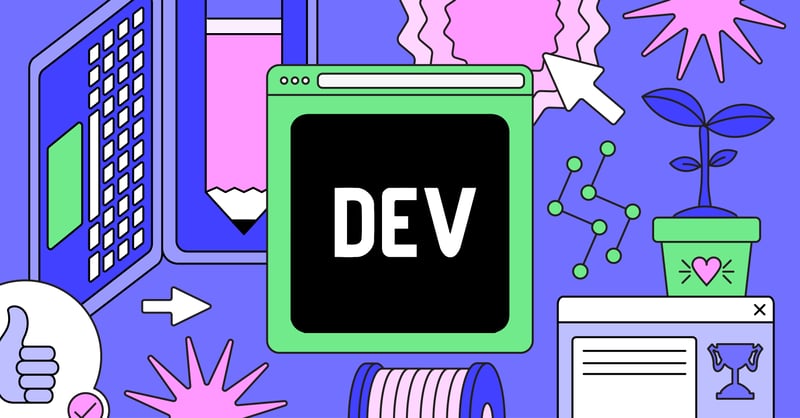
2024-6-27 23:27:34 Author: hackernoon.com(查看原文) 阅读量:3 收藏
Node.js, OpenAI, and a Cup of Coffee
Imagine having a super smart friend who has read every book, article, and blog post on the internet. This friend can answer your questions, help you with creative writing, and even chat with you about any topic under the sun. That’s essentially what a Large Language Model (LLM) is!
Now imagine you can build one!
Large Language Models (LLMs)
Large Language Models (LLMs) like OpenAI’s GPT (Generative Pre-trained Transformer) are revolutionizing how we interact with technology. These models, trained on vast amounts of text data, can understand and generate human-like text, making them ideal for applications such as chatbots. In this article, we’ll explore the fundamentals of LLMs, the concept of prompt engineering, and how to build a chatbot using Node.js, LangChain, and OpenAI.
Key Features of LLMs:
- Contextual Understanding: LLMs can understand the context of a given input, making their responses coherent and contextually relevant.
- Versatility: These models can handle a wide range of tasks, including translation, summarization, and conversation.
- Scalability: LLMs can be fine-tuned for specific applications, enhancing their performance for particular use cases.
Working with LLMs
To effectively utilize LLMs, it’s essential to understand how they process inputs and generate outputs. This involves crafting prompts — inputs that guide the model to produce desired responses.
-
Prompt Structure: A well-structured prompt provides clear instructions and sufficient context. The quality of the prompt directly influences the quality of the output.
-
Tokenization: LLMs process text by breaking it down into smaller units called tokens. Each token can be as short as one character or as long as one word. The model’s understanding is built on these tokens.
-
Temperature and Max Tokens:
- Temperature: Controls the randomness of the output. Lower values make the output more deterministic, while higher values increase randomness.
- Max Tokens: Limits the length of the generated response. Setting an appropriate max token value ensures responses are concise and relevant.
Prompt Engineering

Imagine you’re talking to a very knowledgeable friend who can answer any question you have. You start by asking a general question, but they respond with a clarifying question to understand exactly what you need. This back-and-forth continues until they provide you with a clear and helpful answer.
This is similar to Prompt Engineering with AI. When we interact with large language models (LLMs) like OpenAI’s GPT-3, we provide them with well-crafted prompts that give enough context to generate relevant responses.
For instance, if you ask an AI chatbot, “What are the benefits of Node.js?” and it gives a technical response, you might refine your prompt: “Can you explain the advantages of Node.js for web development?” This structured approach helps the AI understand your query and provide an accurate response.
Prompt Engineering allows developers to communicate effectively with AI, creating smart and responsive chatbots that can assist with a variety of tasks.
Prompt Engineering is the art of designing prompts to elicit specific responses from an LLM. It’s a crucial aspect of working with these models, as the prompt determines how the model interprets and responds to the input.
Tips for Effective Prompt Engineering:
- Be Clear and Specific: Ensure the prompt clearly defines the task. Ambiguous prompts lead to ambiguous responses.
- Provide Context: Give the model enough information to understand the context of the request.
- Iterate and Refine: Experiment with different prompts and refine them based on the model’s responses.
Building a Chatbot with Node.js and LangChain
Now, let’s dive into the fun part: building a chatbot using Node.js, LangChain, and OpenAI. We’ll focus on how prompt engineering can enhance the chatbot’s responses.
Setting Up Your Environment:
-
Initialize a Node.js Project:
mkdir chatbot-app cd chatbot-app npm init -y npm install langchain openai axios
-
Create the Chatbot Structure:
const { OpenAI } = require('langchain'); const axios = require('axios'); const openai = new OpenAI({ apiKey: 'YOUR_OPENAI_API_KEY', // Replace with your OpenAI API key }); async function generateResponse(prompt) { const response = await openai.complete({ model: 'text-davinci-003', // You can use other models available prompt: prompt, maxTokens: 150, }); return response.data.choices[0].text.trim(); }
-
Implementing Prompt Engineering with LangChain:
const { OpenAI, PromptTemplate } = require('langchain'); const openai = new OpenAI({ apiKey: 'YOUR_OPENAI_API_KEY', }); const template = new PromptTemplate({ inputVariables: ['query'], template: You are a helpful assistant. Answer the following question: {query} }); async function generateResponse(query) { const prompt = await template.format({ query }); const response = await openai.complete({ model: 'text-davinci-003', prompt: prompt, maxTokens: 150, }); return response.data.choices[0].text.trim(); } // Example usage (async () => { const userQuery = "What are the benefits of using Node.js?"; const response = await generateResponse(userQuery); console.log(response); })();
Testing and Refining Your Chatbot
Testing is crucial to ensure your chatbot provides accurate and helpful responses. Here are some example interactions:
Basic Query:
- User: “What is Node.js?”
- Chatbot: “Node.js is a JavaScript runtime built on Chrome’s V8 JavaScript engine.”
Complex Query:
- User: “How does asynchronous programming work in Node.js?”
- Chatbot: “Asynchronous programming in Node.js allows non-blocking operations, meaning multiple tasks can be handled concurrently without waiting for previous tasks to complete.”
By iterating on the prompts and responses, you can fine-tune your chatbot to provide more accurate and helpful answers.
Conclusion
Building a chatbot with Node.js, LangChain, and OpenAI is an exciting and accessible way to harness the power of LLMs. Understanding the fundamentals of LLMs and mastering prompt engineering are key to creating a chatbot that delivers accurate and contextually relevant responses. I hope this guide inspires you to explore the potential of LLMs in your applications.
Happy coding!
如有侵权请联系:admin#unsafe.sh